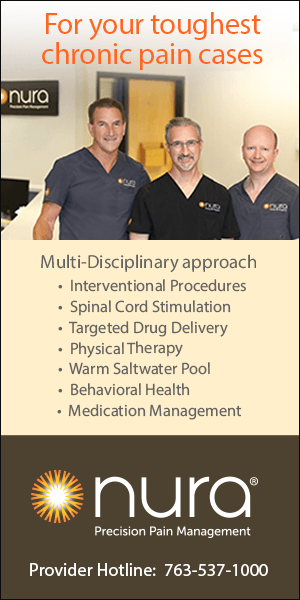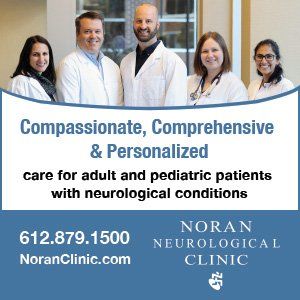he American Journal of Preventive Medicine indicates that 80%-90% of a person’s overall health is determined by socioeconomic factors and environmental factors (where we live, learn, work, and play). The balance of 10%-20% is attributed to care provided in hospitals, clinics, and other traditional health care facilities.
Social Determinants of Health
E-referral Solutions
Screening and connecting patients to community services
Reid Haase, MA
For many people, the pandemic and racial injustice have compromised their ability to satisfy the foundational needs in Maslow’s pyramid and, additionally, ensure that medical treatment and access either continues to be available or is made available. The problems are daunting when we look at the needs that have escalated in the social domains as organized by the Department of Health and Human (DHHS). These domains include economic stability; education access and quality; neighborhood and built environment; social and community context; and health care access and quality.
To address these concerns, emerging and actionable solutions are helping create a path toward connection and improvement. Health care does not typically factor in upstream structural social conditions that hinder optimal health, but we can utilize enhanced electronic approaches to connect patients with organizations in our communities to address social needs precipitated by the upstream structure. Technology platforms known as e-referral solutions have been available for years and are gaining traction due to the growing global, national, and local health disparities and health equity challenges.
A handful of established and emerging vendors are automating the complex landscape of assembling a catalog of social resources and constructing automated processes of screening and connecting patients to these resources. The technology needs to be accompanied by designing clinic-to-community workflows, as well as educating staff and clinicians about the importance and impact of the 80% of determinants on patient health.
Minnesota patients are starting to benefit from e-referral vendors.
Addressing The Process
Creating links in the chain between health care and community can improve multiple factors. We may not know which patients are in need or which supportive social services exist to serve patients in a community. Current processes from screening through referral may be nonexistent or manual and inconsistent (e.g., a recommendation to visit an agency, an address, a phone number, or a person to talk to which are jotted down and handed to the patient on a piece of paper). At best, the current referral processes are complex, relying on social workers, nurses, and sometimes doctors who have varying levels of knowledge about the services that exist in their community (also discounting the need to know about qualifications needed to utilize the services, languages spoken, hours of service, etc.).
Unfortunately, the referring health care professional invariably has no idea whether the patient followed through on the referral or whether services were delivered. These are the links e-referral vendors create on behalf of patients. The ills of the social referral process are analogous to breakdowns in medication adherence where there may be no feedback on whether prescribed medications have been picked up from the pharmacy and taken as prescribed.
Minnesota patients are starting to benefit from e-referral vendors applications that enable new workflows to be incorporated into daily encounters with patients which start with a detailed screening/risk identification step. At a basic level, e-referral solutions enable health care and community-based organizations to identify individuals at risk, screen for social needs in a broad set of social categories, and electronically refer patients and community members directly to community-based organizations (CBOs)/agencies that can provide assistance beyond what the health care system is able to or designed to deliver from a social services perspective. An added key benefit is the automated solutions offer a “closed loop” feedback mechanism that a CBO can populate and indicate how and whether the referral was addressed. This critical piece of information is a starting point for a referring organization to understand and analyze the impact and benefit for their patients based on aggregated or individual referral data.
Using the Tools
The first step is to identify which patients or segments of patient populations are at risk. It is helpful to consider which segments within a defined population may be at risk and narrow the focus of who is likely to benefit from screening for needs in the social domains. Much like the PHQ-2 or PHQ-9 for depression screening, a brief set of questions can lead to further questions to determine which social needs exist. There are also data analytics that can be done by third-party vendors to help narrow the wider net of screening. This may involve sorting by ZIP code or even block or street level to help narrow the screening to patients with a high probability of social needs (a positive SDOH screening). E-referral vendors do not solve the questions of determining which patients or groups of patients to screen.
Once individuals who may be at risk are identified, the next step is employing a validated screening tool. There are several such as the Protocol for Responding to and Assessing Patients’ Assets, Risks, and Experiences (PRAPARE) which was developed the National Association of Community Health Centers; the Accountable Health Communities (AHC) Health-Related Social Needs (HRSN) screening tool developed by the Center for Medicaid and Medicare Services; an internally developed set of patient risk screening questions; or an EMR vendor created set of questions. The e-referral vendors are broadly able to incorporate responses from any of these screening tools.
Some organizations and communities may have identified priority needs through a community health needs assessment (CHNA) or aggregated data from individual screening results, but are challenged by not having CBOs/agencies that provide corresponding services for each social domain in the screening. Broad patient population screening has the benefit of collecting data that can be used to better support structural needs changes and can be used for policy work at many levels. An adverse effect that must be considered when deciding on the breadth of questions and whom to screen is creating expectations for services or solutions that may not exist within the community.
An electronic social needs referral is indeed akin to a prescription.
Taking Action Steps
Once the screening steps have been completed, referring is where the strength of the e-referral solutions lies. All e-referral vendors rely on a database of local CBOs they build (using different data aggregation and community outreach techniques) that is maintained on a regular basis and serves as a “phone book.” This enables immediate matching from the needs-based screening to the appropriate services, whether based on location, hours, languages spoken, or other dimensions. The “needs to services” matching algorithm is typically highly customizable and eliminates the uncertainty of which services are appropriate for a patient, while eliminating the need to rely on roles or individuals within an organization.
An electronic social needs referral is indeed akin to a prescription. It is simply a social services prescription that can direct patients to the most appropriate services based on list of parameters that each vendor makes available. The agencies that receive these referrals (and are participating in the vendor’s network of CBOs) can close the loop and send confirmation back to the referring source (whether health care or another source such as another CBOs, school, etc.). Receiving this information helps determine how effective the workflow has been and whether the services available are meeting the social needs identified.
It is important to keep in mind that even in the best of times, many CBOs are constrained in their ability to deliver services and support their ongoing missions. If health care doesn’t partner with the community and CBOs to discuss the workflows, expected volumes of referrals and payment mechanisms, the CBOs can quickly become overwhelmed. We also cannot assume CBOs will have the bandwidth and ability to have the needed staff to receive, acknowledge, and send back data to the referring organization without some level of support and training. CBOs frequently operate on limited budgets, braided grant funding, and may have high staff turnover, all of which must be factored into efforts to implement referral workflows and utilize any vendor application. Any effort to implement an e-referral system and clinic to community workflows must engage the community partners at the outset. Their voices and concerns need to be included in the planning, implementation, and ongoing operations stages in the spirit of “nothing for us without us.”
As we recognize and account for additional utilization placed on community service agencies, we also need to contemplate and design workflows that do not create unmanageable burden — a key reason to engage CBOs early. We need to be clear about who we are screening, ensuring we don’t cast the screening net too widely and create unnecessary work on the health care side of the partnership. From an access and equity lens, we know that many high-risk populations are not native English speakers and may need special assistance. Screening questions in many of the categories inquire about sensitive and personal aspects of our patients lives and the screening process must be implemented with corresponding sensitivity. E-referral processes have demonstrated value for patients and there is more work to be done from a data analytics perspective to link SDOH screen data sets with outcomes based on clinical data.
Available Options
A small handful of vendors have been active in the national e-referral space such as Aunt Bertha, Healthify, NowPow, UniteUs and a few others. NowPow was the first to establish health care clients in Minnesota (Minneapolis, St. Paul metro), followed by Aunt Bertha. UniteUs has recently announced a partnership with CyncHealth (formerly the Nebraska Health Information Initiative) and is seeking to establish clients in Minnesota. While there are some general similarities in the workflows of these vendor products, each of them has a different approach and price point. Where one may focus on health care and referring to the community, another may start by building a community coalition, then bringing health care providers in as stakeholders.
Just as there are efforts to enable EMRs to share data, the same need is under discussion in the national conversations around SDOH to standardize data and put this data on track to be exchanged and protected with appropriate consents and HIPAA compliance (we have minimal ICD-10 “Z codes,” but not enough granularity). One effort is the Gravity Project facilitated by the HL7 standards organization. As is the case with any set of health care data, there are emerging requests to collect, store, and mobilize SDOH data and optimize it through aggregation and analysis for many purposes.
There is much that can be done by better understanding and addressing the 80% social determinants component of patient health that is influenced and largely determined in the community and outside the boundaries of the 20% determined in the health care arena. Payment models such as ACOs that enable flexibility in how we help patients achieve their best possible health are just one avenue to connecting health care to community and taking advantage of the e-referral solutions that are rapidly being adopted across our state and nation.
Reid Haase, MA, is a Senior Healthcare IT Consultant, Practice Facilitator and works with Quality Improvement at Stratis Health.
MORE STORIES IN THIS ISSUE
















